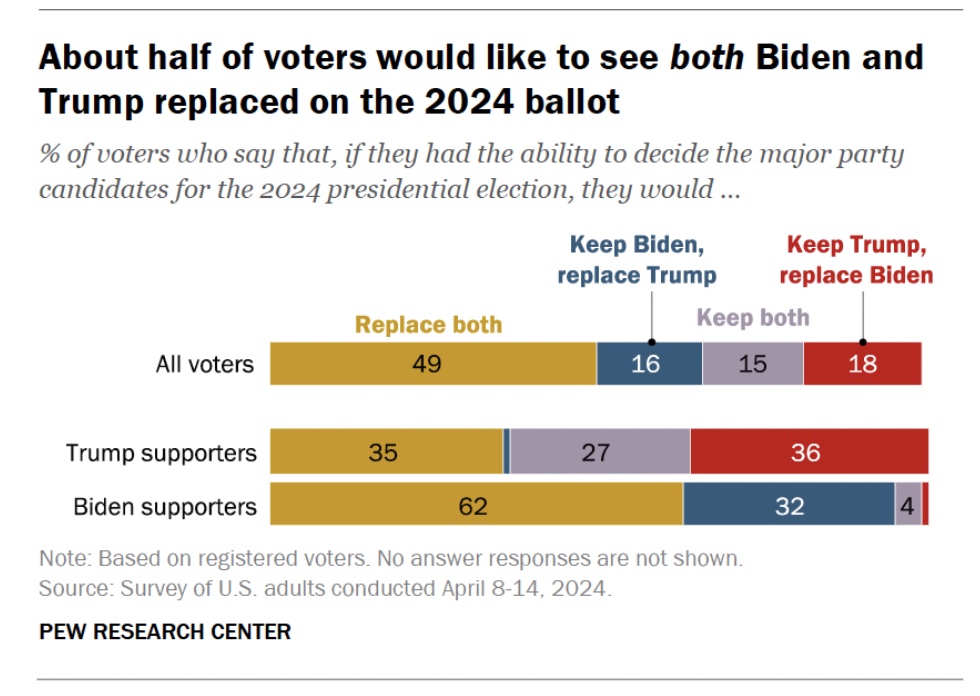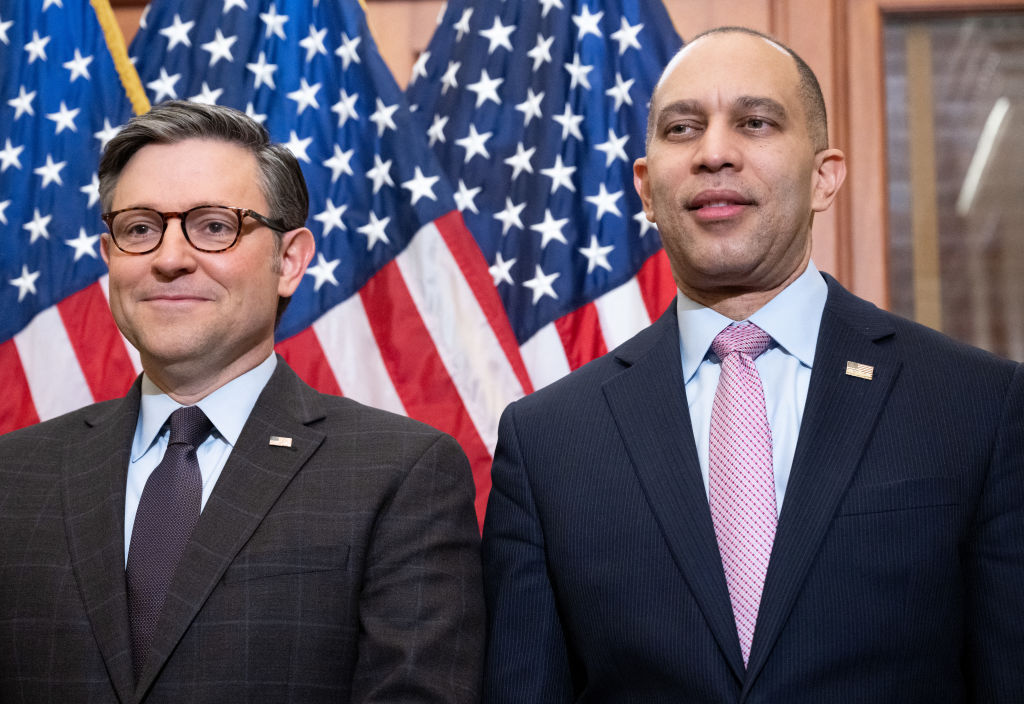The impermeable membrane of partisanship that sheathes American voters’ brains may not be good for the country, but it sure helps forecast congressional races in presidential years.
In five of the six presidential elections this century, the party that won the White House also won or retained a majority in the House of Representatives. Only in 2012, when Republicans were insulated by their 2010 mega-majority—the largest midterm gains by a party out of power since the Great Depression—did voters choose different parties to control the House and the presidency.
With so little split-ticket voting, we have tended to get a lot of sweeps. Voters, especially the substantial chunk of the electorate that turns out only in presidential years, tend to pick one side or the other, not evaluate the merits of the individual candidates for lower offices. That’s particularly true in the House, where many Americans go to vote not sure even of whom their current representative may be.
So what can we figure for the House this year?
Republicans came out of their disappointing 2022 midterms with a scanty five-seat majority. And that has been whittled down to a single seat by a slew of resignations and one expulsion. But if you figure Republicans will hold all their currently vacant seats, Democrats need only a net gain of four seats out of 435 to grab the House back this year.
Even if President Joe Biden loses reelection, he’s all but certain to win the national popular vote. In five of the six quadrennial elections this century, the party that got more presidential votes nationally has gained House seats. The two times that the Electoral College and the popular vote didn’t line up, 2000 and 2016, the party that lost out on the White House still made gains in Congress. Four seats should be a cinch for the Ds.
Looked at that way, Democrats seem like a very good bet to retake the House. That’s exactly how to read the substantial fundraising advantage the blue team has enjoyed this cycle. Political action committees have two strong predilections for how they distribute their money: 1) Incumbents, which makes sense in a system with a 94 percent reelection rate, and 2) The party presumed to be coming to or staying in power.
By about a $40 million margin, the lobbyists and PAC men and women who follow these things so closely have bet that Democrats will be back in charge in 2025. And while that looked a lot more certain when Republicans were acting like a pack of howler monkeys fighting over a bunch of bananas, it still seems like the most likely outcome even as Speaker Mike Johnson basks in the warm glow of strange new respect.
But it’s that sixth presidential popular vote result that ought to give us a bit of hesitation, because the only time in a quarter-century that the top presidential vote-getter had no coattails at all—indeed, saw his party lose 13 seats—it was Biden at the top of the ticket.
Since the House reached its current size of 435 seats in 1913, Biden is only the fourth president to win a first term with a popular vote mandate while his party lost seats in the lower chamber of Congress. And 2020 was the worst such showing since 1960 when John Kennedy won in a squeaker, just 112,827 votes nationally, and Democrats lost 21 House seats.
Biden beat incumbent Donald Trump by more than 7 million votes, but Democrats still went bust in what looked like easy pickings.
Woof.
We can explain a lot of it by circumstance. In 2018, Democrats had their best midterm showing since Watergate, snagging 40 seats. In the process, they picked off a bunch of typically red districts that were ripe for Republicans to flip back in the larger-turnout presidential year.
Now that the GOP is increasingly dependent on lower-middle class voters, the party seems to be suffering from some of the midterm woes that plagued Democrats when they were the blue-collar brand. Richer, more educated voters turn out at a higher frequency, which gives the white-collar party an edge in midterms. But when turnout jumps in a presidential year, the advantage is muted.
If that holds true this time, and Republicans, especially in rural and small-town precincts, come out of the woodwork to vote for Trump again, Biden could very easily repeat the feat of winning millions more votes nationally but with no help for his Democrats in the House.
And it would be normal for his party to do worse in his reelection year than the first time around.
Of the four incumbent presidents reelected since 1980, only one has started his second term with more members of his party in the House. That was George W. Bush, an anomaly explained by the Republicans’ rare escape from the midterm curse in 2002, when a post-9/11 electorate was still rallying around the commander-in-chief. But Ronald Reagan, Bill Clinton, and Barack Obama all had less partisan backing in the House after their re-elections than they did at their first inaugurations.
Biden had 222 Democrats backing him in the House when he took the oath, a majority of just five seats. That’s not much room for a second-term drop-off.
The way things have typically worked is that a president gives his party a boost when he wins his first term, then voters rein him in with a midterm rebuke and divided government. The president’s party gets back some of what it lost when reelection comes around, but not quite back to par.
Biden started with reverse coattails and lost nine more seats in midterms. He and his party will probably claw back some of those, but how many? The four that Democrats need for a majority certainly seem possible, but anything more than the barest majority looks unlikely, even in a solid Biden showing on the presidential level.
Both the Cook Political Report and the University of Virginia’s Center for Politics, the two most venerable rankers of races, basically agree on the current state of play for the House. Cook puts 203 in the blue column and 210 in the red column, with 22 tossups. UVA says it’s 206 Democratic, 211 Republican, and 18 up for grabs.
Democrats would have to win more than two-thirds of the most competitive seats in either version to get to a one-seat majority. But that wouldn’t be crazy. Tossups tend to break one way or the other, and in a presidential year, that’s almost always in the direction of the party that wins the popular vote. Almost always.
In 2020, 100 percent of the tossups went the same direction, it just wasn’t the same as the presidential vote. In fact, Republicans nabbed seven seats that looked like Democratic wins, including picking off two safe-seeming incumbents.
As we get closer to the election and the parties have picked all their candidates, we will break down the two dozen or so races that will likely decide control of the House. But for now, it’s more helpful to look at the contest as a whole. The picture that emerges is of a very closely fought battle that will likely result in another razor-thin majority.
And with the very real possibility of another round of mayhem in the House regarding the certification of the presidential results, it may matter a great deal which party and by what margin the Congress is controlled on January 6, 2025.
Holy croakano! We welcome your feedback, so please email us with your tips, corrections, reactions, amplifications, etc. at STIREWALTISMS@THEDISPATCH.COM. If you’d like to be considered for publication, please include your real name and hometown. If you don’t want your comments to be made public, please specify.
STATSHOT
Biden Job Performance
Average approval: 40.0%
Average disapproval: 56.2%
Net score: -16.2 points
Change from one week ago: ↓ 0.2 points
Change from one month ago: ↑ 2.2 points
[Average includes: Quinnipiac: 35% approve-61% disapprove; Monmouth 42% approve-55% disapprove; Marist: 45% approve-51% disapprove; Reuters/Ipsos: 38% approve-56% disapprove; NYT/Siena: 40% approve-58% disapprove]
Polling Roulette

TIME OUT: ‘THE CLOUD UNDER THE SEA’
The Verge: “The world’s emails, TikToks, classified memos, bank transfers, satellite surveillance, and FaceTime calls travel on cables that are about as thin as a garden hose. … The cables are buried near shore, but for the vast majority of their length, they just sit amid the gray ooze and alien creatures of the ocean floor, the hair-thin strands of glass at their center glowing with lasers encoding the world’s data. … If, hypothetically, all these cables were to simultaneously break, modern civilization would cease to function. … The reason websites continue to load, bank transfers go through, and civilization persists is because of the thousand or so people living aboard 20-some ships stationed around the world, who race to fix each cable as soon as it breaks. … For some, it’s the adventure — repairing cables in the churning currents of the Congo Canyon, enduring hull-denting North Atlantic storms. Others find a sense of purpose in maintaining the infrastructure on which society depends.”
WARNING SIGNS FOR TRUMP IN PHILLY SUBURBS
Washington Post: “More than 150,000 registered Republicans voted for Nikki Haley in Pennsylvania’s presidential primary Tuesday. … With the vast majority of votes tallied Wednesday morning, Trump won about 83 percent of the vote. But Haley, who ended her campaign March 6, carried more than 16 percent, sparking a debate among strategists and observers about Trump’s ability to consolidate GOP support. … One potentially troubling sign for Trump came in the Philadelphia suburbs, four vote-rich counties where turnout is crucial to win the state. In three of the four counties, nearly 25 percent of Republican voters cast ballots for Haley over Trump. … Less clear is whether many of them, who tend to be more moderate, might be 2020 Biden voters or new potential Trump defectors. Biden had a much stronger showing in those key swing counties, winning over 90 percent in all four. … Public polling shows a tight race in Pennsylvania, with Biden and Trump virtually tied.”
Biden in Florida as six-week ban set to take effect: Wall Street Journal: “President Biden took his push for abortion rights to Florida, where he blamed rival Donald Trump for a looming six-week ban in the Republican’s home state as he seeks to keep the issue at the forefront for voters. … While the state isn’t considered a top presidential battleground, it provides a powerful backdrop as Democrats assail the ban and campaign for a November ballot initiative that would restore broad abortion access in the state. … Biden tied Trump, the presumptive Republican presidential nominee, to bans in Florida and other states. … Trump now makes his home in Florida, but he will be stuck for the next few weeks at his hush-money trial in a Manhattan courtroom. … Since Roe fell, abortion rights advocates have won seven straight referendum victories. The Florida ballot measure would need to receive at least 60% approval from voters to pass.”
Poll: Trump up, Robinson down in North Carolina: WRAL: “North Carolina has picked the Republican candidate for president in 10 of the last 11 presidential elections. … But the state’s voters have put a Democrat in the governor’s mansion in seven of the last eight elections. … North Carolina could be headed toward a similar split in 2024, according to a new Meredith College poll. … [The poll] found Trump with 41% support and Biden with 39%. Robert F. Kennedy Jr. received 9% of the vote. … In the governor’s race, [Democrat Josh Stein] leads [Republican Mark Robinson] 45% to 36%, buoyed by a big edge among unaffiliated voters, who make up the largest bloc of registered voters in North Carolina.”
MCCORMICK SECURES GOP NOD IN PENNSYLVANIA
NBC News: “Democratic Sen. Bob Casey and Republican Dave McCormick are officially set to face off in Pennsylvania’s high-stakes Senate battle this fall after winning their uncontested primaries on Tuesday. … For McCormick, a hedge fund executive and former official in President George W. Bush’s Treasury Department, his 2024 run comes on the heels of a failed 2022 bid [for Senate]. … This time around, McCormick has the support of Trump, as well as GOP leaders across Pennsylvania. … Even with a unified GOP behind him, McCormick faces an uphill battle. Republicans have lost race after race in the Keystone State following Trump’s shocking upset victory there in 2016. And Casey, the son of the state’s former governor, often polls ahead of President Joe Biden in the state.”
Lake, again, appears to shift abortion position: CNN: “Kari Lake expressed regret in a recent interview that Arizona’s century-old abortion ban was not being enforced by the state’s Democratic leadership, remarks that appear at odds with her recent public opposition to the law. ‘The Arizona Supreme Court said this is the law of Arizona, but unfortunately, the people running our state have said we’re not going to enforce it. …’ Lake’s latest remarks come as she confronts criticism from within the anti-abortion movement over her recent shift on the law. In 2022, as a candidate for governor, the former TV news anchor praised the 1864 law. … But as a candidate for Senate, Lake has flipped her position on the abortion law. Lake came out against the Arizona Supreme Court’s abortion ruling earlier this month.”
BRIEFLY
Rest in peace, Rep. Donald Payne—New Jersey Globe
Moderate Rep. Brian Fitzpatrick staves off right-wing primary challenger—Philadelphia Inquirer
California’s Newsom launches ad campaign in … Alabama—San Francisco Chronicle
WITHIN EARSHOT: DIVERSION TACTICS
“One way of ending the demonstrations on Gaza would be to name me president of Harvard because then the demonstrations would be all about getting rid of President Romney. There would be mayhem.”—Sen. Mitt Romney jokes about Sen. John Fetterman’s suggestion that the former Massachusetts governor assume the Harvard presidency.
You should email us! Write to STIREWALTISMS@THEDISPATCH.COM with your tips, kudos, criticisms, insights, rediscovered words, wonderful names, recipes, and, always, good jokes. Please include your real name—at least first and last—and hometown. Make sure to let me know in the email if you want to keep your submission private. My colleague, the energetic Nate Moore, and I will look for your emails and then share the most interesting ones and my responses here. Clickety clack!
CUTLINE CONTEST: ‘WRONG.’

The final week of the April Cutline Contest was no easy choice. There were many funny entries, including several that might have deserved a shot. But our winner did not shy away from the gag we have often seen repeated for photos of politicians with clenched fists, a favorite of this politician in particular. A risky play!
But boldly daring, our winner should be greatly rewarded:
“No, my rock beats your scissors and your paper. It’s a perfect rock. It cannot be cut. It cannot be covered. People say they’ve never seen such a rock.”—Steve McCardell, Redding, Connecticut
Winner, You Can Look It Up Division:
“Anyway, it’s not perjury if your hand’s closed.”—Bill Ward, St. Augustine Beach, Florida
Winner, West Wing Workers’ Comp Division:
“Concern rises for carpal tunnel due to habitual fist-clenching.”—Linda McKee, DuBois, Pennsylvania
Winner, Newtonian Division:
“Free Huey”—Bob Goldman, Gilroy, California
Winner, Bring a Helmet Division:
“Local man silently but proudly celebrates as he finds his hair hasn’t moved in three days.”—Jeff Tatusko, Plum, Pennsylvania
Winner, The Great Replacement Division:
“The newest development in election technology: HoloTrump.”—Joshua Bean, Bedford, Virginia
Winner, Ivan Drago Division:
“Yo, Adrian!!”—Jared Fuqua, League City, Texas
Now, on to our April contest finals. Our monthly winner was another risk taker, but in this case, it was going as slightly risque as our PG-13 standards would allow for a photo of Arizona Senate candidate Kari Lake making a bold fashion statement on a visit to Washington. Winner Bill Ward of St. Augustine Beach, Florida gave us: “It’s what I like to call the Electoral Decolletage.”
For his prize, we turned to a more wholesome era in Arizona politics with a “Goldwater Girl” sash and pin worn by volunteers for the Republican nominee’s 1964 campaign. (Though probably not this volunteer in particular.) All that and a chance at the ham of glory in our year-end contest. In your heart, we know he’s right. Please email us your address, Mr. Ward, so we can send along your laurels.
FINE DINING? OH YEAH, YOUBETCHA
KMSP: “A city in Minnesota has declared itself the ‘Restaurant Capital of Minnesota.’ Local tourism officials from Explore Maple Grove launched a new marketing campaign this week declaring Maple Grove as the ‘Restaurant Capital of Minnesota.’ They say that having nearly 150 restaurants makes Maple Grove the perfect city for the title. Tourism officials say, ‘Every road leads to a restaurant in Maple Grove.’ Their self-proclaimed ‘Restaurant Row’ has options like Chipotle, Cold Stone and Panda Express. The city plans to launch a restaurant week later this year.”
Nate Moore contributed to this report.





Please note that we at The Dispatch hold ourselves, our work, and our commenters to a higher standard than other places on the internet. We welcome comments that foster genuine debate or discussion—including comments critical of us or our work—but responses that include ad hominem attacks on fellow Dispatch members or are intended to stoke fear and anger may be moderated.
With your membership, you only have the ability to comment on The Morning Dispatch articles. Consider upgrading to join the conversation everywhere.